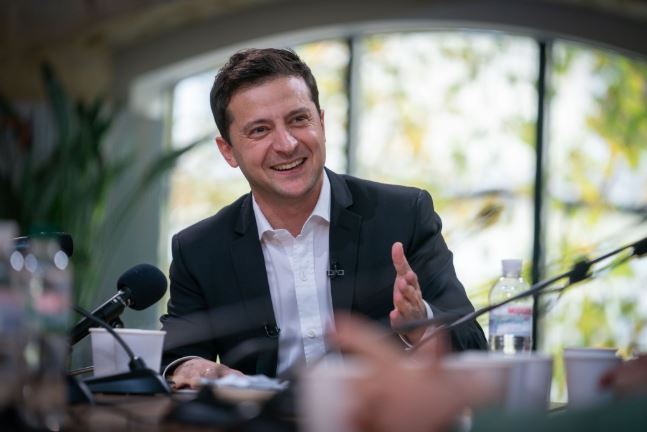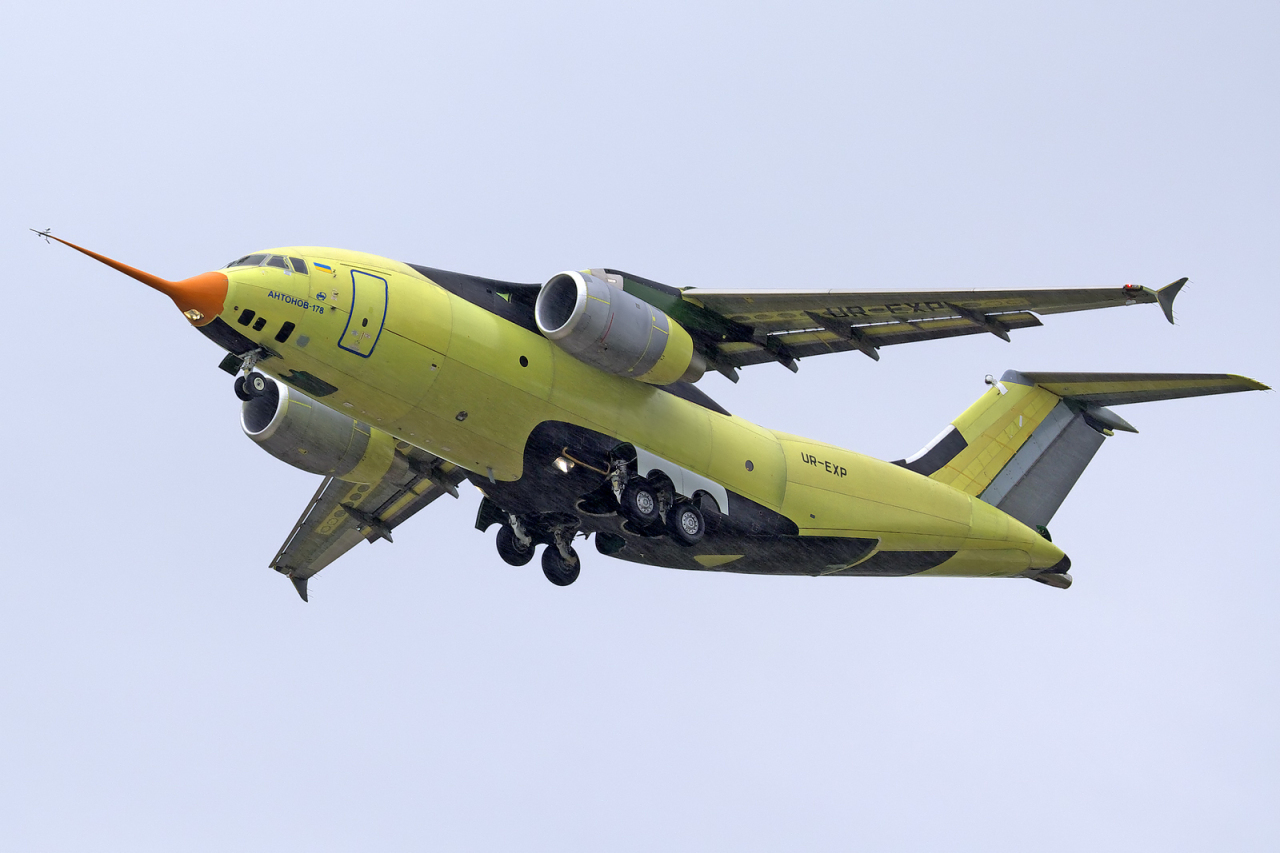The following article was contributed by the Embassy of Ukraine -- Ed.
Startup has recently become a superfluous word, and is viewed as a driver of future-oriented innovative economy. But you have probably never heard about a startup country. This metaphor was used by President Volodymyr Zelenskyy to describe ambitious and vibrant economy of Ukraine, which is in many ways different from other emerging markets.
In the five years since the Revolution of Dignity, notwithstanding aggressive efforts of the Russian Federation to block Ukraine’s pro-western democratic course, the country made steady progress in improving its global economic standing and implementing structural reforms. This movement gained strong impetus after election of the new President Zelenskyy, who gained overwhelming support of over 73 percent of voters in April 2019.
Since 2014 the government of Ukraine has introduced world-class transparent procurement system “Prozorro,” which saves the state budget around $6 billion per year; unbundled energy sector monopolies; implemented law-enforcement, judicial, healthcare and education reforms; signed ground-breaking Deep and Comprehensive Free Trade and Association Agreement with the European Union. Up to date Ukraine has 17 FTAs with 46 countries.
In 2019 Ukraine climbed five more places in the World Bank’s Ease of Doing Business rating, to 71st out of 190 countries. In 2018 it improved by seven positions in the Global Innovation Index, reaching 43rd place. Between 2015 and 2018 the country witnessed foreign direct investment flows of $14 billion, including projects by Bayer, Cargill, Fujikura, General Electric, Ikea and many others.
Startup has recently become a superfluous word, and is viewed as a driver of future-oriented innovative economy. But you have probably never heard about a startup country. This metaphor was used by President Volodymyr Zelenskyy to describe ambitious and vibrant economy of Ukraine, which is in many ways different from other emerging markets.
In the five years since the Revolution of Dignity, notwithstanding aggressive efforts of the Russian Federation to block Ukraine’s pro-western democratic course, the country made steady progress in improving its global economic standing and implementing structural reforms. This movement gained strong impetus after election of the new President Zelenskyy, who gained overwhelming support of over 73 percent of voters in April 2019.
Since 2014 the government of Ukraine has introduced world-class transparent procurement system “Prozorro,” which saves the state budget around $6 billion per year; unbundled energy sector monopolies; implemented law-enforcement, judicial, healthcare and education reforms; signed ground-breaking Deep and Comprehensive Free Trade and Association Agreement with the European Union. Up to date Ukraine has 17 FTAs with 46 countries.
In 2019 Ukraine climbed five more places in the World Bank’s Ease of Doing Business rating, to 71st out of 190 countries. In 2018 it improved by seven positions in the Global Innovation Index, reaching 43rd place. Between 2015 and 2018 the country witnessed foreign direct investment flows of $14 billion, including projects by Bayer, Cargill, Fujikura, General Electric, Ikea and many others.

Ukraine’s current investment attraction model emphasizes 4+1 sectors strategy, focusing on the development of agribusiness, manufacturing, energy (especially renewable) and infrastructure, with innovation technology linking all of these sectors. The model is often presented as “grains and brains” -- promoting innovation and opportunities, while integrating into global supply-chains with advantages of huge agri-food potential and cost-effectiveness of manufacturing.
The benefits are evident in meteoric rise of Ukraine’s IT sector – the country’s largest service exporter, which has experienced 25 percent growth in 2018 alone. In general, IT industry has grown by nearly 40 times over the last 15 years -- from $110 million in 2003 to $4.5 billion in 2018. Startup investment also rose up drastically from $24 million in 2011 to $337 million in 2018.
Historically Ukraine has been a center for software development, technology solutions for data analysis and processing. The first computer in continental Europe was built in Kyiv in 1950. The country has the vast pool of professionals, with annual graduation of 130.000 engineers. According to Gartner firm, Ukraine’s IT specialists rank first in Eastern Europe in terms of price-quality ratio. Obviously this is a strong edge in terms of preparedness for the “fourth industrial revolution.”
More than 100 out of Fortune 500 companies have chosen Ukraine for IT services, with over 4000 companies working in country’s IT sector altogether. Samsung R&D Institute Ukraine was launched in Kyiv in 2009, with research areas in AI, data intelligence, visual and communications technologies, robot, IoT, life-care and security.
In 2019 the government established the Ministry of Digital Transformation, aimed to shift online 100 percent of public services for citizens and business, cover 95 percent of the country with high-speed internet access, implement large-scale educational programs for digital skill development, and increase IT’s share in county’s GDP to 10 percent. In the broader sense “State in Smartphone” initiative is aimed at curbing ineffectiveness and corruption, while empowering citizens and creating added value.
Another pillar of Ukraine’s economic growth is agricultural sector, which accounts for 17 percent of country’s GDP and almost 40 percent of its export. Its role is preconditioned by natural advantages, as Ukraine possesses largest arable land bank in Europe and 10th biggest globally, including 25 percent of the world’s most fertile black soil.
According to 2019 forecast, Ukraine will harvest record 75 million tons of grains and legumes, including 36 million tons of corn. In terms of trade, in 2018 Ukraine was world’s No. 1 in exports of sunflower oil and meal, No. 2 in rapeseed, No. 3 in honey, No. 4 in corn and barley, No. 5 in wheat and butter, No. 6 in soybean, No. 7 in poultry and rapeseed oil, No. 8 in soybean oil and meal; powder milk and cream, and No. 9 in white sugar.
Agricultural products, predominantly wheat, account for more than 50 percent in structure of export from Ukraine to South Korea.
In September 2019 Korean Posco International in partnership with Ukrainian Orexim Group opened big grain terminal in the Black sea port of Mykolaiv.
Agro and food exports of Ukraine were growing at the average rate of 13.5 percent over the last 10 years, while enjoying substantial cost advantages, and having plenty of room for further productivity growth. With additional investment into management, education, irrigation, farming techniques, logistics and seed production, Ukraine is poised to double its annual grain harvest to approximately 120 million tons per annum.
Vast investment opportunities exist in the fields of expanding rail facilities for grain transport, barge shipment infrastructure, deep water port development, building cereal and vegetable storages, introducing advanced greenhouse cultivation, agro-machinery production and food processing.
The government and parliament of Ukraine are preparing swift opening of the land market, which will give solid boost to agro-business and economy in general.
Surprisingly little is known about potential of Ukraine’s space and aviation industry. At the same time, Elon Musk named Ukrainian ‘Zenith’ rocket as second best after SpaceX. Since 1991 Ukraine made 164 launches of commercial launch vehicles, putting into orbit nearly 300 satellites, including 3 Korean satellites of KOMPSAT series.
Apart from developing their own launch vehicles, Ukrainian enterprises take part in international projects, including European Vega (upper stage main engine) and US Antares (the basic design of the first stage) -- vehicles of both types were successfully launched in 2019.

Real Ukrainian marvel -- Antonov aviation company -- produced more than 22.000 passenger, cargo and special purpose airplanes under AN brand during the last 70 years. The company designed over 100 types of airplanes, including world largest AN-225 Mriya, with cargo capacity of 250 tons.
Full circle of aerospace industry and supplying technologies in Ukraine is boosted by over 5.000 annual graduates with aerospace engineering degrees.
Ukraine’s potential is not limited to the abovementioned fields. Its main power lies within its people -- industrious, intelligent, hospitable and freedom-loving. With irreversible drive towards united and prosperous European family, based on common history, values and aspirations, Ukraine is wide open to the world. Open for investment, business, and tourism, cultural and inter-human relations.
For further information, contact the Embassy of Ukraine in South Korea and UkraineInvest agency.
-
Articles by Korea Herald









![[Kim Seong-kon] Democracy and the future of South Korea](http://res.heraldm.com/phpwas/restmb_idxmake.php?idx=644&simg=/content/image/2024/04/16/20240416050802_0.jpg&u=)








![[KH Explains] Hyundai's full hybrid edge to pay off amid slow transition to pure EVs](http://res.heraldm.com/phpwas/restmb_idxmake.php?idx=652&simg=/content/image/2024/04/18/20240418050645_0.jpg&u=20240418181020)

![[Today’s K-pop] Zico drops snippet of collaboration with Jennie](http://res.heraldm.com/phpwas/restmb_idxmake.php?idx=642&simg=/content/image/2024/04/18/20240418050702_0.jpg&u=)